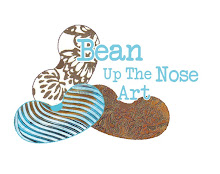It is not a fun job, to say the least. You are dealing with your own feelings of loss . . . and then, how even to start drafting a note to someone feeling it even more so? It is difficult to know what to say, and how to say it.
And yet, notes of condolence really mean a very lot to that someone who has lost her loved one.
Here are seven tips that can make the process of writing condolence notes "easier."

1. Don't delay. In days of shock and sadness close to the time of loss, people appreciate knowing that other people are aware of what has happened. And they appreciate your reaching out more than you know. On the other hand, if you learn about the loss later, don't let that time lapse deter you from writing, either.
2. A phone call or e-mail are not the same as words you have written on paper and taken the time to mail or deliver. Hand-written notes mean a lot. And can be re-read, and treasured.
3. When you're writing, try to avoid using euphemisms such as "passed away" and "passed over." Using words that more specifically acknowledge the person's loss (such as "loss") touches the heart.
4. Let the person know what you remember about their loved one. Again, specifics are great. Specifics convey to your friend that you actually knew her loved one, spent time with her, valued her, and you remember what is special about her.
5. It's usually more helpful to pack your note with gracious words of warmth, memory, and togetherness, than to cover the territory of mourning by using words of loneliness, awfulness, and grief.
6. Be respectful of your recipient's beliefs about life, death and what comes after.
7. Avoid asserting things like, "I know exactly how you feel," "It's for the best," or in any way comparing your experiences of grief with theirs. This is their time, and we don't know exactly how they feel because everyone experiences things in her own way.
 For more information on this topic (and how to write many other kinds of notes, too), pick up The Art of the Personal Letter: A Guide to Connecting Through the Written Word, by Margaret Shepherd.
For more information on this topic (and how to write many other kinds of notes, too), pick up The Art of the Personal Letter: A Guide to Connecting Through the Written Word, by Margaret Shepherd.You do a very kind thing when you send a condolence note. It can feel uncomfortable and overwhelming when we need to. But it will mean so much.





5 comments:
What a great post, Tamara. Some points that are worthwhile to remember. Plus your card designs communicate a sense of positive comfort. Good job!
Tamara,
A hard subject, but very helpful. I had an acquaintance say just the other day that she was finding more need for sympathy cards - sad but true.
Tamara, very helpful. And beautiful cards you have created as well. I haven't had to write many of these thankfully, but your tips will help when I do. Thank you for sharing!
Thanks very much for your feedback! It's never fun to write one of these, so seemed like good subject matter to try to shine some light on . . . .
I have, unfortunately, had to use your sympathy cards a couple of times recently. And your advice is spot-on.
Post a Comment